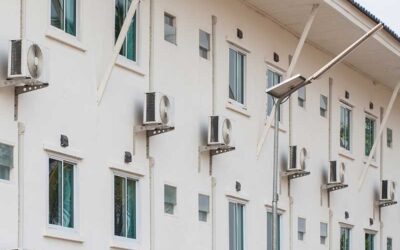Label Homes, Not People!


As climate change continues to manifest itself in irregular weather patterns with catastrophic impacts on life and property, it is becoming increasingly important to apply mechanisms that sustain liveable conditions in our urban centres. This is particularly important for a developing economy like India, with a large growing population, amidst stressed urban infrastructure. The onus to build and sustain resilient communities lies as much with the individual consumers as with policy makers – and for this, reliable and accessible information is key to influence consumers and markets to make informed choices. This is where residential building energy labelling steps in.
A relatively new concept in India, residential energy label provides consumers information on the designed energy performance of the building. Thus, the building’s energy performance attains contractual value, that is, the seller or landlord can lucidly explain the cost of investment in energy efficiency, which will reflect in the value of the building. Similarly, the buyer or tenant will be able to integrate the many benefits of energy efficiency into their purchase decision, which will further reflect in the resale and rental value of the building. Residential building energy labelling will equip consumers with easy and free information to compare different homes – in terms of their expected energy consumption during the home’s lifetime – and thus make informed purchases. Most importantly therefore, residential building labels will create much-needed visibility for a building’s energy performance, akin to the fuel efficiency of an automobile that we are so tuned to consider while making a purchase.
Act now
Per IESS 2047, as India’s population grows, the number of households will increase by more than 20% and 40% in the next 10 and 20 years respectively, over the current baseline. Superimposed by economic growth and urbanisation, the residential sector is expected to gain more than 3 billion square meters of new buildings by 2030, with large ramifications in terms of power system impacts and carbon emissions. Electricity demand due to residential sector is expected to reach 698 billion units (BU) by 2030 from 2018 value of 250 (BU). India has a critical window of opportunity to act now, engaging the active participation of direct consumers to reduce the energy and emissions footprint of its future housing stock. Widespread application and general public awareness of residential energy labels can encourage a market shift towards energy efficient homes, locking in long-term efficiencies both for the homeowner, in terms of reduced energy bills and improved comfort, and for the environment, in terms of reduced energy use and emissions.
Is Your Home a Star?
The Bureau of Energy Efficiency (BEE) has recently launched its Energy Efficiency Label for Residential Buildings (residential labelling) programme for single and multiple dwelling units. BEE’s star labelling of appliances has already made great strides saving 197 BU of cumulative electrical energy during 2006 to 2016 by empowering consumers with energy performance information of appliances at the point of purchase. Per BEE’s estimate, the proposed residential labelling program can bring 388 BU of cumulative energy saving by 2030 for both new and existing residential buildings. This will have far-reaching benefits, helping alleviate grid overloading and urban heat islands, and significantly reducing emissions from the residential building stock. Energy-efficient homes will help foster a culture of energy efficiency, create new market for energy-efficient products, and help reduce social stratification caused by asymmetrical distribution of resources and nurture healthy communities for a sustainable India.
Some programmes like ones in the UK, Singapore and Japan have a minimum area criterion for labelling, India’s programme has no minimum criteria for area or for connected load. However, similar to most international building labelling programmes, BEE’s residential labelling applies to both new and existing buildings. Also, like most international labelling programmes, BEE’s programme uses simulated Energy Performance Index (EPI) – that is, the electrical energy consumed per unit area per year – as the main indicator for building energy efficiency. Building’s envelope characteristics, comfort and lighting systems are considered to arrive at the EPI. BEE’s EPI benchmarks for the different star levels will vary by climatic zones. The label will display the number of stars (5 being the highest and 1 being the lowest) along with the name of the owner and property address. As per the BEE’s estimate, a 5-star rated home is expected to be 40% more energy efficient than 1-star rated home.
The Key to Success
The success of any residential building energy labelling programme will depend on the active and widespread support and cooperation of several stakeholders with shared benefits – government agencies such as the BEE in this case, the building construction community including builders, architects and vendors, the legal community, and most of all, the informed end-user. Since most of our residential built-up area is latent, we have the opportunity to install energy efficiency in our homes and gain long-term benefits. The responsibility of shifting towards healthy and sustainable communities lies with us and we must move forward with a curious and environment-sensitive mindset while buying or renting new homes.
This blog was written by Strategic Advisor, Sneha Sachar, and Consultant, Akash Goenka, with research inputs from the Buildings & Communities team.




